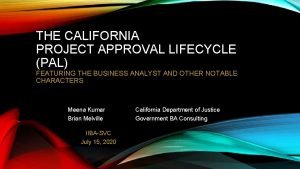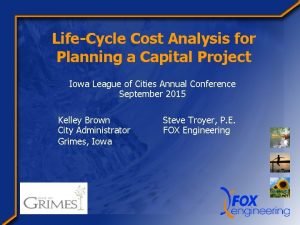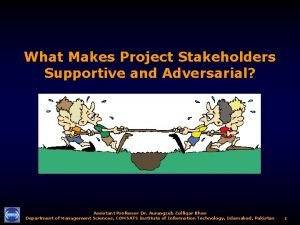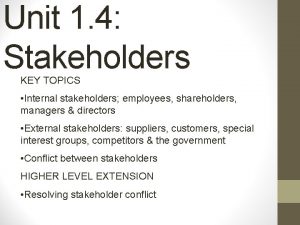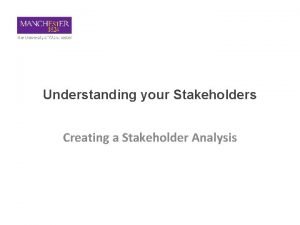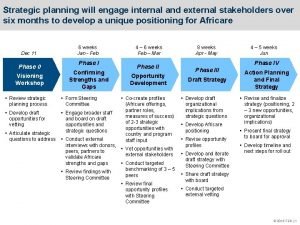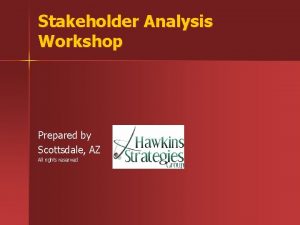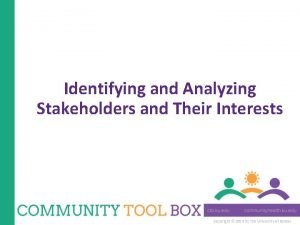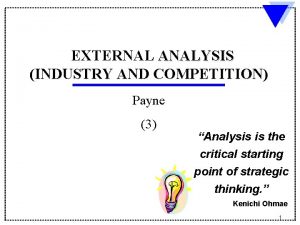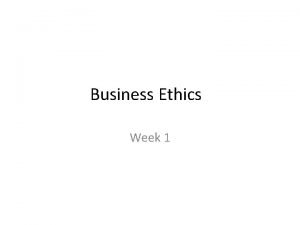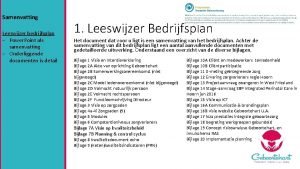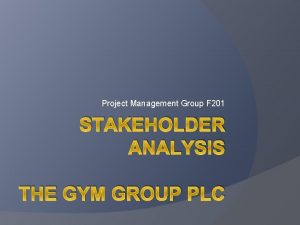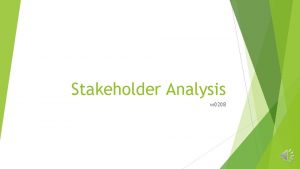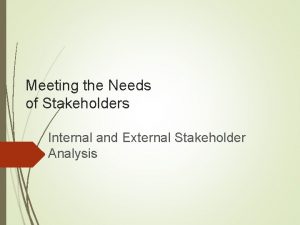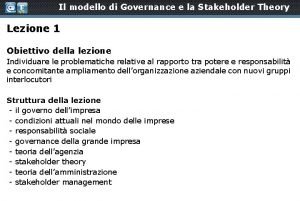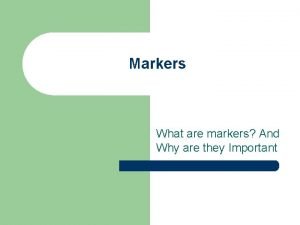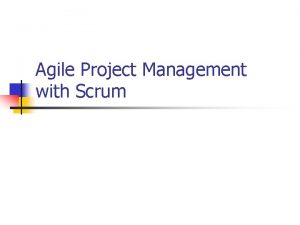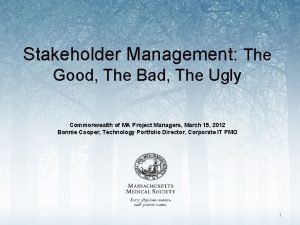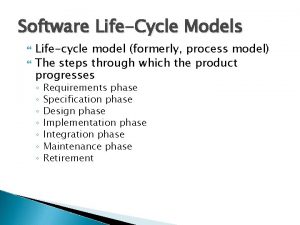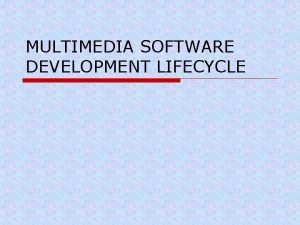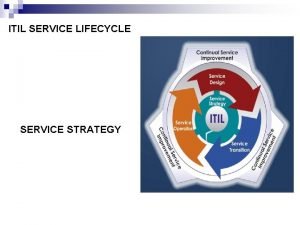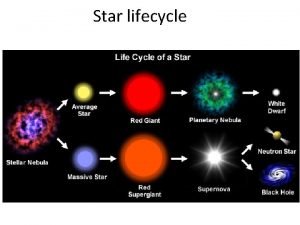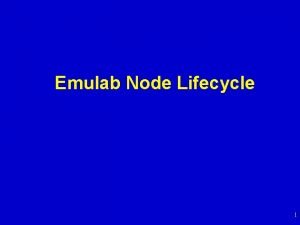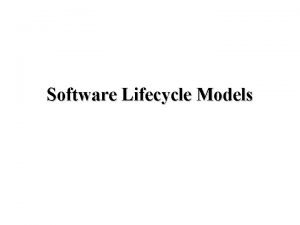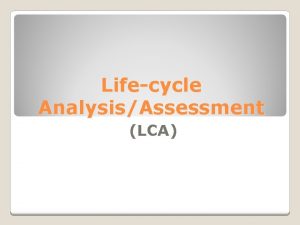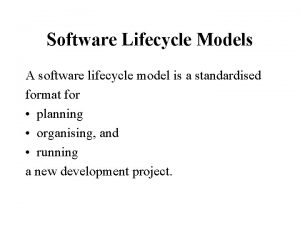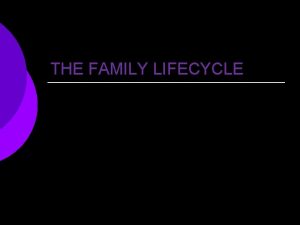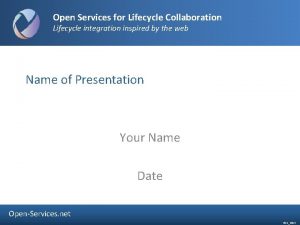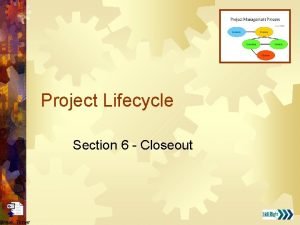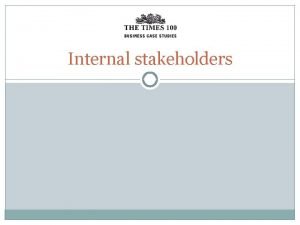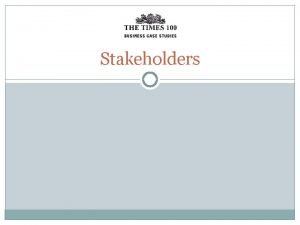Project Lifecycle Section 3 Project Stakeholders Project Stakeholders











































- Slides: 43

Project Lifecycle Section 3 Project Stakeholders

Project Stakeholders ® What ® If is a project stakeholder? you can gain or lose from the success or failure of a project, you have a “stake” in the project.

Key Project Stakeholders ® Customer/client ® Project sponsor ® Project manager ® Project team

Customer/Client ® Provide a point of contact ® Fulfill responsibilities outlined in the statement of work ® Approve: Measurable success indicators, deliverables, budget, schedule ® Use of customer resources ® Changes ® Closing ® ® Share lessons learned

Project Sponsor ® Identify: ® Reason for the project ® Expected outcome ® Success measures ® Time frames ® Help: ® Obtain resources ® Remove barriers

In Addition the Project Sponsor… ® Clarify any role or responsibility issues ® Ensure that progress reviews occur after the schedule is finalized ® Review the project team’s monthly report ® Keep the team focused on implementing the project management process ® Participate in the project close-out ® Support the project manager

Project Manager Define and manage customer expectations. ® Coordinate development of the project plan. ® Monitor and control project work according to the approved plan. ® Communicate project status by preparing status reports and conducting progress review meetings. ® Establish and follow a change management process. ® Lead the project team and resolve conflicts between team members. ® Maintain the project notebook. ® Conducting project close-out activities. ®

Project Manager Skills ® Leadership ® Communications ® Organizing ® Negotiating ® Managing conflict ® Motivating ® Controlling ® Team building ® Planning ® Directing ® Problem solving ® Coaching ® Delegating ® Supporting The skill set for a good general manage

Project Team Members ® ® ® Identify work tasks Estimate the duration of work tasks Help prepare the project network diagram Honestly report work status Keep the project manager informed on project issues Attend scheduled progress review meetings ® Raise issues important to the project’s success ® Keep their functional managers updated ® Participate in the project close-out ®

Other Project Stakeholders ® Senior management ® Internal crossfunctional organizations ® External thirdparty suppliers

Senior Management ® ® ® “Champion” implementation of PM process Assign project manager Approve project plan/changes Provide resources Lead continuous improvement efforts ® ® ® Establish priorities among projects Provide methods for performing work Approve close-out of project Help resolve issues and conflict Support the project manager

Internal Cross-Functional Organization ® Provide necessary resources for the project. ® Manage any work elements, or subprojects that have been assigned to the functional group. ® Interface with the project manager to be sure all the work is done as planned.

External Suppliers ® Provide the deliverables, products, and/or services contracted for. ® Prepare status reports and attend review meetings as required. ® Meet all contractual commitments according to terms and conditions agreed upon.


The Project Team How are project teams formed? Careful selection process? Luck of the draw? Team selection and the strength of the team depends on the company’s type of Project Organization!

Organizations and Project Management

Organizational Breakdown Structure (OBS)

Project Lifecycle Section 4 - Planning


Why Plan? “The nicest thing about not planning is that failure comes as a complete surprise and is not preceded by a period of worry and depression. ” John Preston, Boston College

Project Plan Contents ® ® ® Statement of work (SOW) Work breakdown structures (WBS) Responsibility assignment matrices Project schedule Resource plans/histograms Budget Risk management plan ® Communications plan ® Quality plan ® Verification and validation plan ®

Project Plan Benefits ® Provides an effective communication tool to ensure understanding of project goals and the means to achieve them ® Defines outcomes and commitments ® Establishes guidelines and standards ® Establishes the baseline for evaluating and reporting progress ® Forms the basis for scope control and change management

Project Notebook ® Project Pre-plan ® ® Background information Customer data Third-party data (vendors, suppliers, etc. ) ® ® ® Statement of Work (SOW) Work Breakdown Structure (WBS) Organization/responsibility charts Schedule data Budget/capital plan Risk management Project Implementation ® ® ® Meetings (agenda/minutes) Team/management/customer/third party progress reports Customer change requests/decision matrix issue resolution forms/reports Project Close-out ® ® Project Plan ® ® ® ® Final evaluation of measurable success indicators Close-out meeting (agenda/minutes) Final project report Reference letters Lessons learned Project Administration ® ® ® Contractual documents Invoices Expenses Correspondence Contact log

Statement of Work — Purpose ® Define the scope of the project ® Establish customer expectations ® Serve as a “contract” if necessary

A Good SOW will answer … ® What is the purpose or goal of the project? ® Why is the project being done? ® Who is the initial customer? ® Who is the end user or final customer? ® What are the customer deliverables? ® What technical support is required for the deliverables?

And continue to answer … ® What is the budget? ® What is the final date for the deliverables? ® What are the measurable success indicators (metrics)? ® What kind of support is required from the customer? ® What contingency plans are in place?

SOW — Generic Contents ® Customer ® Project ® Title ® Purpose ® Background ® Deliverables ® Measurable success indicators ® Customer support ® Risk plans

Statement of Work - Page 1 STATEMENT OF WORK Date: Form completion date Contributors: People who helped write the statement of work Person or organization requesting the work Immediate Customer: Person or organization who will Final End User: use the results of the project PROJECT TITLE: The project title should be a short, concise statement that defines the project. PURPOSE: The purpose of the project is the goal; why you are doing the project. This should be clearly stated.

PROJECT BACKGROUND: The project background should contain information pertaining to the history of the project. It also includes a statement that justifies the project. t For a first draft, brief statements are acceptable. Formal statements of work are usually in paragraph form. t Supply information that explains the philosophy behind the project. Also describe what makes the project unique/special. t This information can be used later to: – Leverage resources – Accommodate management directives – Gain support from external – Accommodate changes organizations/departments Many of the statements made in the background section must be substantiated in the measurable success indicators section of the statement of work. The project background includes the following key elements: t History t Consequences t Justification t Uniqueness of project Some examples on the type of information to include in the project background section include: t Meet safety requirements t Support business plan t Meet quality requirements t Meet customer expectations t Improve performance/efficiency

DELIVERABLES: Deliverables are the outputs of the project. They are what is promised to the customer. t Deliverables are written as nouns. They are things. t Quantities must be identified in this section. t Include the major elements of the deliverables. It is important to be very clear in the deliverables section. Misinterpretation of project deliverables can establish incorrect customer expectations. The following are examples of deliverables: t Parts t Test results t Prototypes t Training t Procedures t Specifications t Equipment t Technical drawings t Installation of equipment t Plans t Written reports

STATEMENT OF WORK (Page 2) MEASURABLE SUCCESS INDICATORS: Measurable success indicators include concise, measurable, information that will be used to determine if a project was successful. Measurable success indicators must substantiate any statements made in the background section. Include what is known about quality, cost, and schedule expectations. Sc he t os du le Quality C Examples of measurable success indicators include: t Complete project in three months t Reduce mass by 30% t Complete ROI for initial expenditure by Nov. 30, 20 xx t Achieved $1. 00 reduction in piece cost t Demonstrate meeting of EPA Standard # xxxx t New process will require two fewer operators t Stay within budget of $275, 000. 00 Two specific measurable success indicators which are most important in terms of seeing the “big picture” of a project are: t Overall schedule t Budget It’s also important to note any key milestone dates that have been established. “SMART” is an acronym used to help write good measurable success indicators for a project. The words which comprise the acronym SMART are: t Specific t Realistic t Measurable t Time (cost) framed t Agreed upon

Smart Measurable Success Indicators (SMART) S - Specific M - Measurable A - Agreed upon R - Realistic T - Time and cost framed

CUSTOMER SUPPORT: The customer support area provides a means to list the items and services that must be provided by the customer/sponsor to ensure the success of the project. Examples include: t Drawings t Subject matter experts t Equipment t Computer time t Photocopying t Phone/secretarial support PROJECT RISK PLANS: The last section of the statement of work is the risk plan. Risk plans consider the possibility of an event occurring that would drastically alter the schedule, budget, or quality of the project. t Identify what is likely to go wrong, and also what can have the most impact. t Ask “What can go wrong? ” “How will I handle it? ” t Put your statements in “If ______, then ______. ” format Examples of risk plans are: t If a labor strike occurs, then outsource production. t If supplier cannot ship materials in time, then contact another vendor. t If design freeze date is not maintained, then use current product design.

Language to Avoid ® “User friendly” ® “Efficient” ® “Maximize” ® “Optimize” ® “User oriented” ® “Minimize” ® “Timely” ® “Approximately”

Misinterpretations are caused by: ® Unclear or ambiguous specifications ® Insufficient work descriptions ® No definitions of specific terminology ® No formal review of the Statement of Work ® Not having an “objective” third party involved in the review process

Exercise Prepare a Statement of Work


Work Breakdown Structure— Purpose ® Identify all of the work that needs to be done to complete the project. ® Structure the work into logical components and subcomponents. ® Define the work to a level of detail so individual responsibilities can be assigned. ® Summarize and report project data.

Representative Work Breakdown Structure Level I (Noun) Level III (Action Verbs) Level IV (Action Verbs)

Automotive WBS Level 1 Level 2 Level 3 Level 4 Level 5 Work Packages

WBS Work Package – Level of Detail ® WHO will be the responsible individual or organization? ® How much TIME will the activity take? ® What COST is associated with accomplishing the activity? ® Can PROGRESS be tracked easily?

WBS — Outlining Approach I. Main Project Deliverable A. Major Element 1. Activity 2. Activity a. task b. task c. task 3. Activity B. Major Element 1. Activity 2. Activity 3 -4 -10 Level 1 Level 2 Level 3 Level 4 Level 3 Level 2 Level 3 The outline approach is used by Microsoft® Project®

Exercise Create a WBS
 Pal process
Pal process Student lifecycle project proposal
Student lifecycle project proposal Capital project life cycle
Capital project life cycle Extended project lifecycle
Extended project lifecycle Extended project lifecycle
Extended project lifecycle Adversarial stakeholders
Adversarial stakeholders Impact of business decisions on stakeholders
Impact of business decisions on stakeholders Internal stakeholders
Internal stakeholders Understanding your stakeholders
Understanding your stakeholders C level stakeholders
C level stakeholders Real estate stakeholders
Real estate stakeholders Stakeholders matrix
Stakeholders matrix Internal vs external stakeholders
Internal vs external stakeholders Managers interest in a business
Managers interest in a business Stakeholders in business
Stakeholders in business Bank stakeholders analysis
Bank stakeholders analysis How to write background of the project
How to write background of the project Stakeholders scuola
Stakeholders scuola Stakeholders
Stakeholders Stakeholders scuola
Stakeholders scuola Stakeholders and their interests
Stakeholders and their interests Examples of internal stakeholders
Examples of internal stakeholders Primary secondary stakeholders
Primary secondary stakeholders Stakeholder approach
Stakeholder approach The corporation and its stakeholders
The corporation and its stakeholders Primary and secondary stakeholders
Primary and secondary stakeholders Ford motor company stakeholders
Ford motor company stakeholders Interne stakeholders
Interne stakeholders How stakeholders impact business activity
How stakeholders impact business activity Secondary stakeholders
Secondary stakeholders Role of employees as stakeholders
Role of employees as stakeholders Stakeholders in hiv prevention
Stakeholders in hiv prevention Gym stakeholders
Gym stakeholders Onion model of stakeholders
Onion model of stakeholders Stakeholders internal and external
Stakeholders internal and external Stakeholder theory
Stakeholder theory Stakeholders in water and sanitation
Stakeholders in water and sanitation Stakeholders plural marker
Stakeholders plural marker Invitation to stakeholders meeting
Invitation to stakeholders meeting Ibm stakeholders
Ibm stakeholders At the seventh sprint review the stakeholders
At the seventh sprint review the stakeholders External stakeholders
External stakeholders Www-sena-edu-co
Www-sena-edu-co Stakeholders ne demek
Stakeholders ne demek
